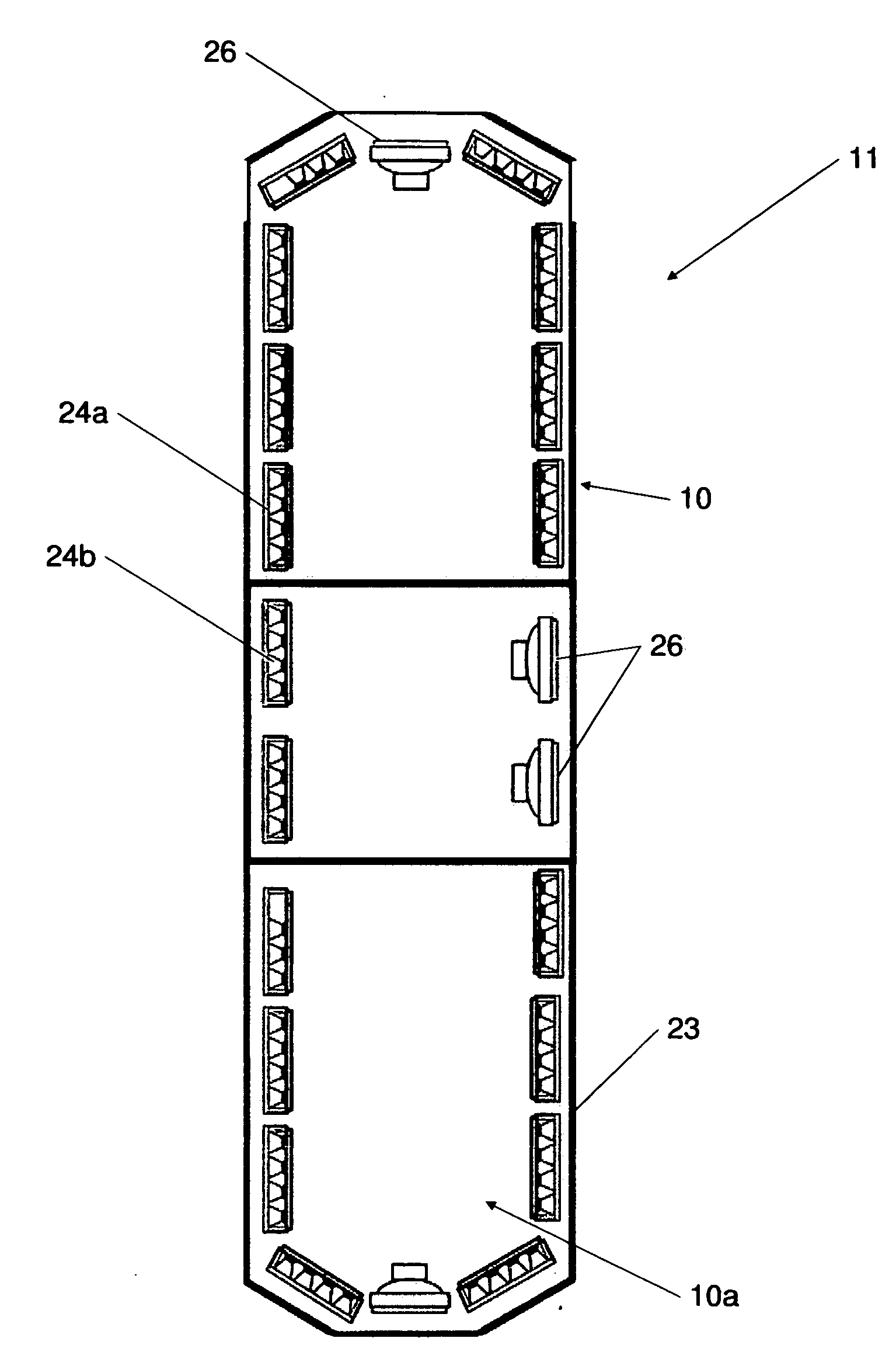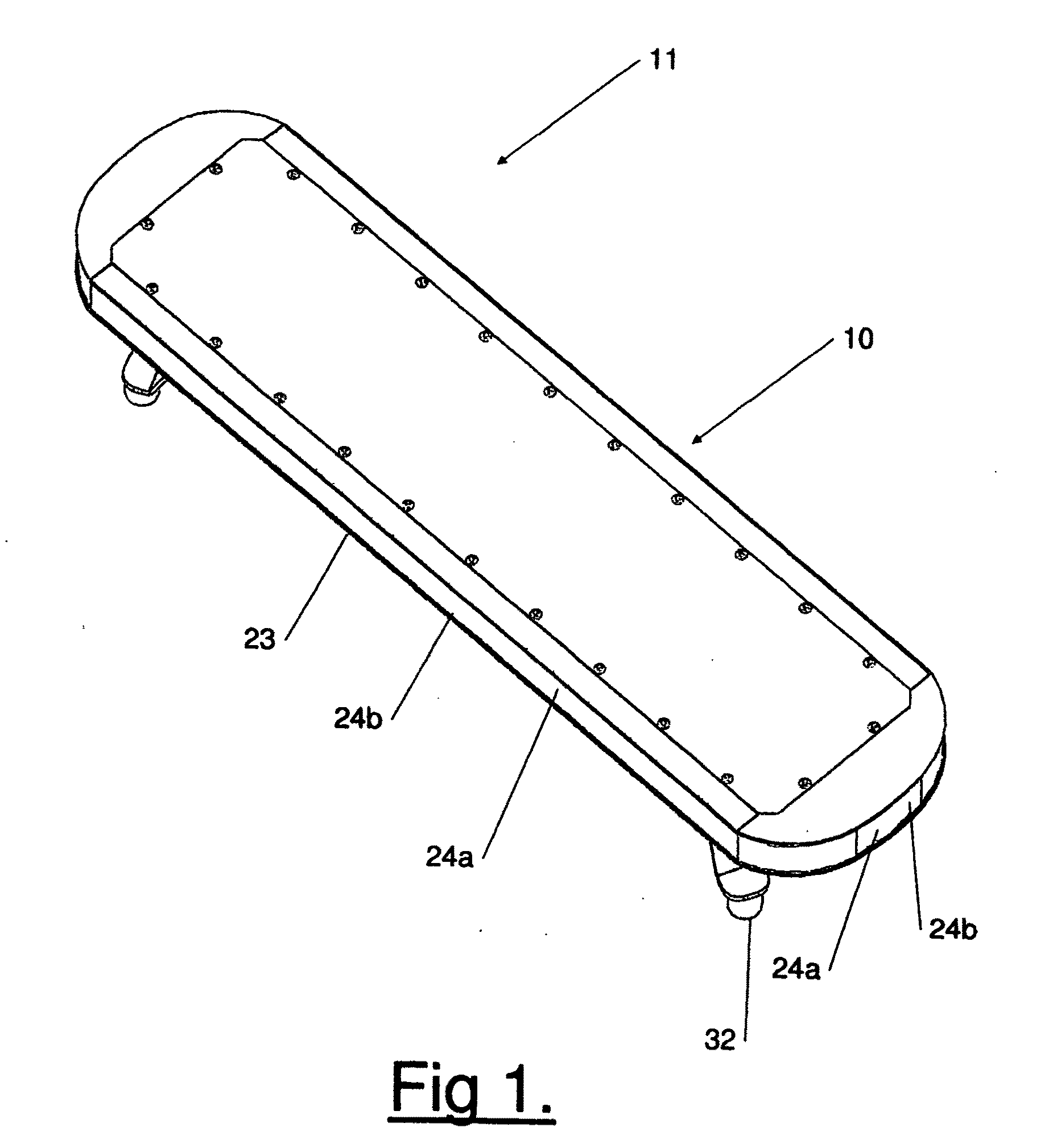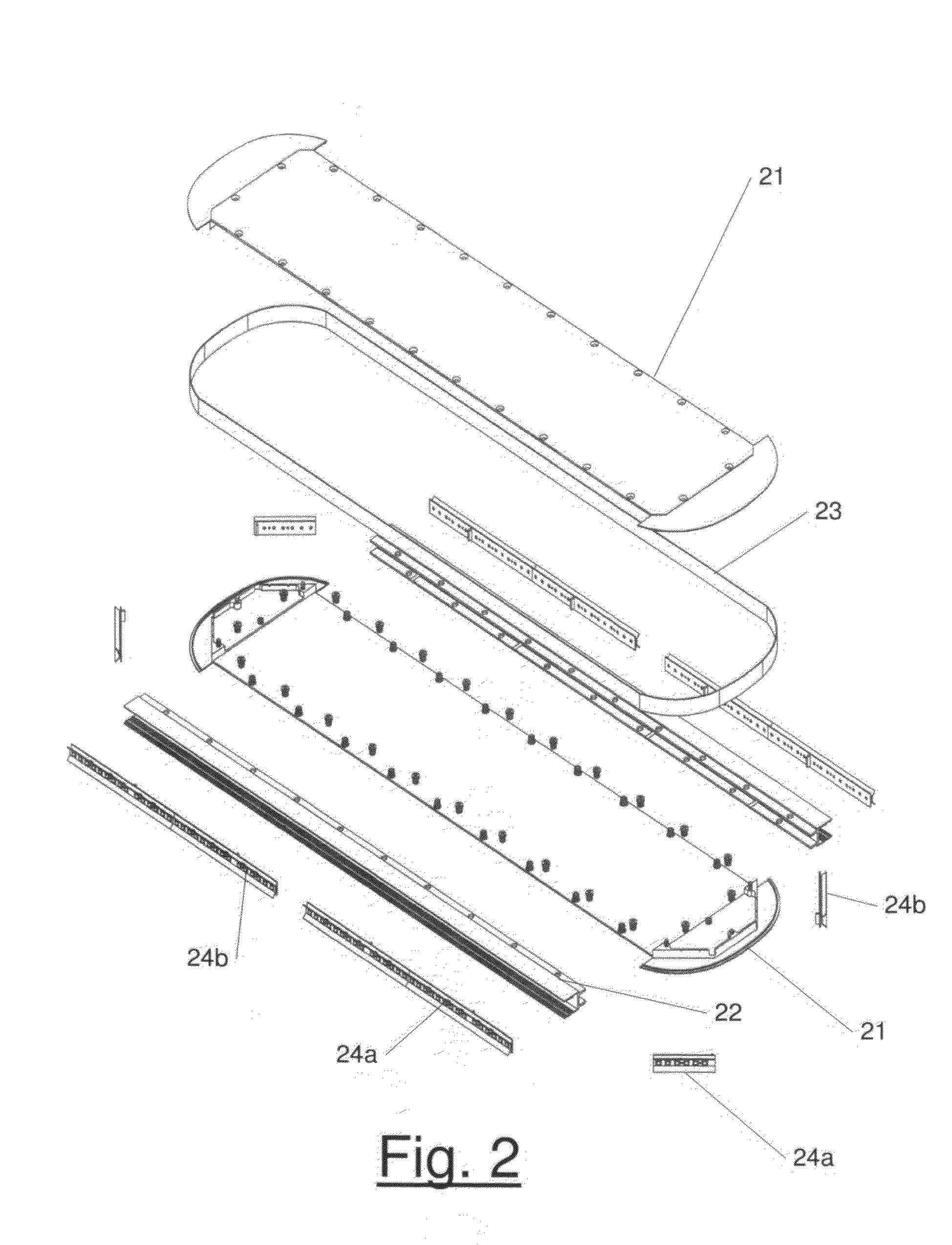Low profile lightbar with IR illumination
- Summary
- Abstract
- Description
- Claims
- Application Information
AI Technical Summary
Problems solved by technology
Method used
Image
Examples
Embodiment Construction
[0021]As can be seen from FIGS. 1-3, the invention provides a low profile lightbar 11 including IR light illuminators 24a and visible light illuminators 24b, and including fasteners 32 for fastening the lightbar onto the roof of a vehicle, onto a bumper, or onto side-mounted running boards. The lightbar is typically configured to receive electric power from the vehicle battery, using a wiring harness for the same, and a control panel (not shown) for mounting in the cabin of the vehicle, including switches (not shown) for switching on and off the IR light illuminators and the visible light illuminators, and advantageously, for preventing turning on the visible light illuminators if the IR light illuminators are turned on.
[0022]The lightbar 11 comprises a low profile frame 10 made of at least one outermost wall element 23 sandwiched between two or more base plates 21, creating a frame interior 10a. Inside the frame interior 10a and located around the periphery of the frame 10 along th...
PUM
 Login to View More
Login to View More Abstract
Description
Claims
Application Information
 Login to View More
Login to View More - R&D
- Intellectual Property
- Life Sciences
- Materials
- Tech Scout
- Unparalleled Data Quality
- Higher Quality Content
- 60% Fewer Hallucinations
Browse by: Latest US Patents, China's latest patents, Technical Efficacy Thesaurus, Application Domain, Technology Topic, Popular Technical Reports.
© 2025 PatSnap. All rights reserved.Legal|Privacy policy|Modern Slavery Act Transparency Statement|Sitemap|About US| Contact US: help@patsnap.com



